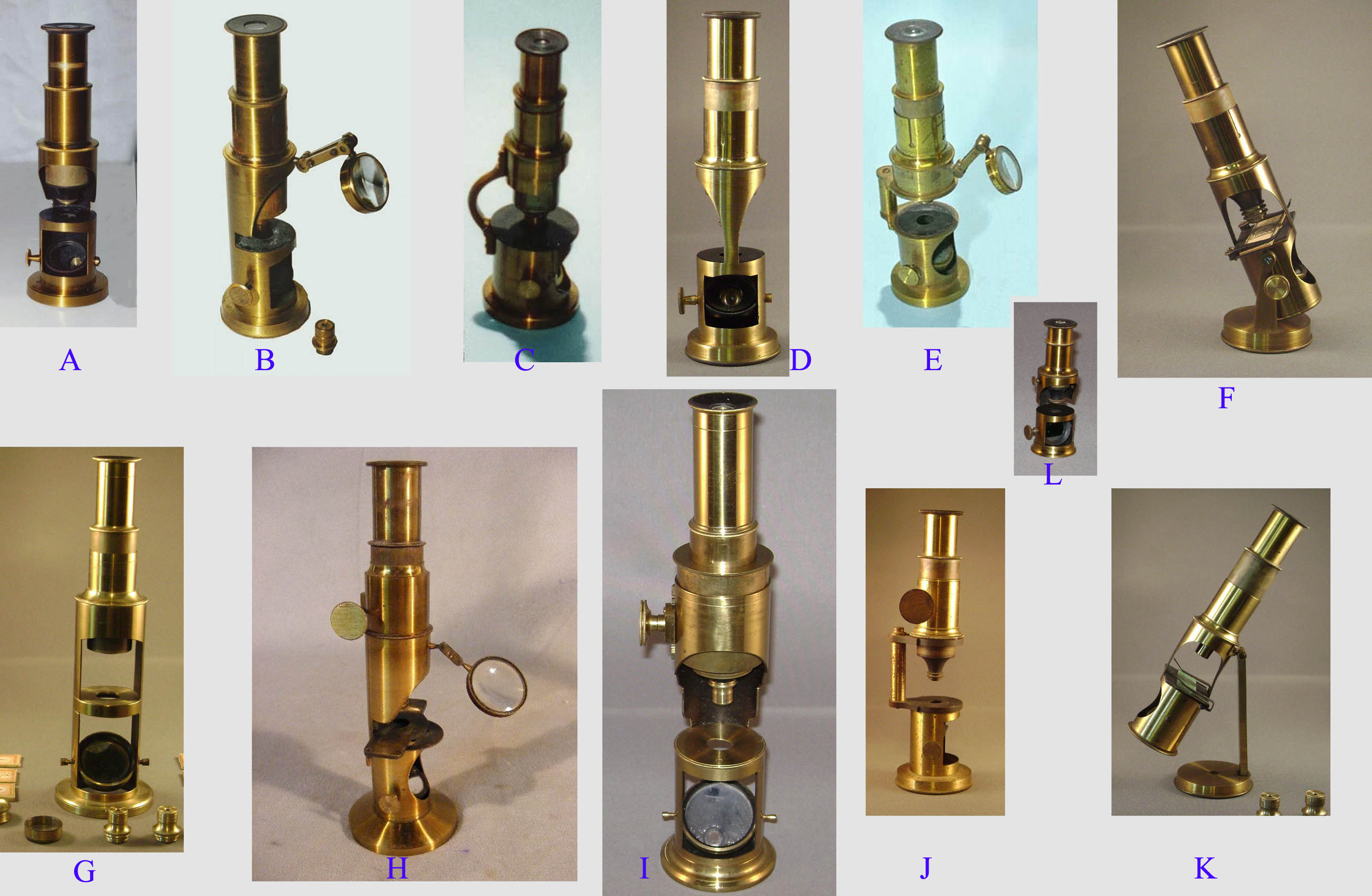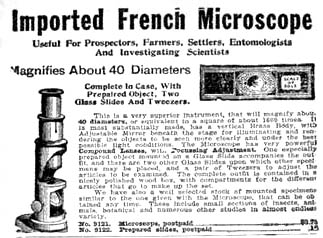MICROSCOPE-ANTIQUES.COM © 2013-15.
THE 'TOY' OR STUDENT DRUM MICROSCOPES OF THE LATE NINETEENTH C. AND FIRST THIRD OF THE TWENTIETH C.

INTRODUCTION:
The drum microscope was apparently invented by German makers in the early 1700's. But Benjamin Martin about 1738, introduced his form which he popularized. His name became associated with these, and they are to this day often still referred to as a 'Martin-Type' although 'Martin Drum Microscope' is more descriptive, particularly since Martin had developed many other designs of microscopes. A review of the early forms of this type of microscope is available on this website.
 Lower quality 'student' or 'toy' versions of the Martin Drum microscope were sold in large numbers in the late 19th and early 20th centuries; the ad to the left is from 1929. Because they were very inexpensive to make, they were made in large numbers, mainly in France. They were often advertised for mail order or catalog sale. The most common models, especially when sold in the 20th century, were A and B. These were also the lowest quality models. Some of the more expensive examples had achromatic objectives.
Lower quality 'student' or 'toy' versions of the Martin Drum microscope were sold in large numbers in the late 19th and early 20th centuries; the ad to the left is from 1929. Because they were very inexpensive to make, they were made in large numbers, mainly in France. They were often advertised for mail order or catalog sale. The most common models, especially when sold in the 20th century, were A and B. These were also the lowest quality models. Some of the more expensive examples had achromatic objectives.
Besides their crude optics, they posed some disadvantages over other models. There was an attempt to overcome some of these issues. Intrinsic to the original forms of drum microscope was a sliding coarse focus, so some had a rack and pinion focus added(H,I,J). The stage of the basic model allowed limited access and some some models had less obtrusive designs such as opening access to the stage from two sides(D,G,F,K), or the use of a thin pillar to support the body tube(C,E,J), rather than using an extension of the basic outer tube housing upwards. Most came with a single objective, but often the French objectives were divisible and sometimes extra objectives and other accessories were supplied(B,G). To obviate the annoying feature of being always oriented vertically, some made provisions for inclination(F,K).
Often they were sold with a bullseye condenser attached to the body tube(B,E,H), to allow better illumination of opaque objects.
The miniature 'Bertrand' or 'Furnace' model(L) was quite small and light, but a dovetail groove on top of its box allowed it to be firmly held in place.
The earlier models of all the various drum microscopes came in nice heavy hardwood boxes, but the later, especially twentieth century models, were often sold in thin pine boxes.
At the same time that some of these 'toy' drum microscopes were being sold, more substantial models that could be used for serious work were also available. These included examples made by Nachet until 1862, Oberhauser, Hartnack c 1865 and by EnglishMakers through much of the 19th century, though less commonly as the century progressed.

 Lower quality 'student' or 'toy' versions of the Martin Drum microscope were sold in large numbers in the late 19th and early 20th centuries; the ad to the left is from 1929. Because they were very inexpensive to make, they were made in large numbers, mainly in France. They were often advertised for mail order or catalog sale. The most common models, especially when sold in the 20th century, were A and B. These were also the lowest quality models. Some of the more expensive examples had achromatic objectives.
Lower quality 'student' or 'toy' versions of the Martin Drum microscope were sold in large numbers in the late 19th and early 20th centuries; the ad to the left is from 1929. Because they were very inexpensive to make, they were made in large numbers, mainly in France. They were often advertised for mail order or catalog sale. The most common models, especially when sold in the 20th century, were A and B. These were also the lowest quality models. Some of the more expensive examples had achromatic objectives.